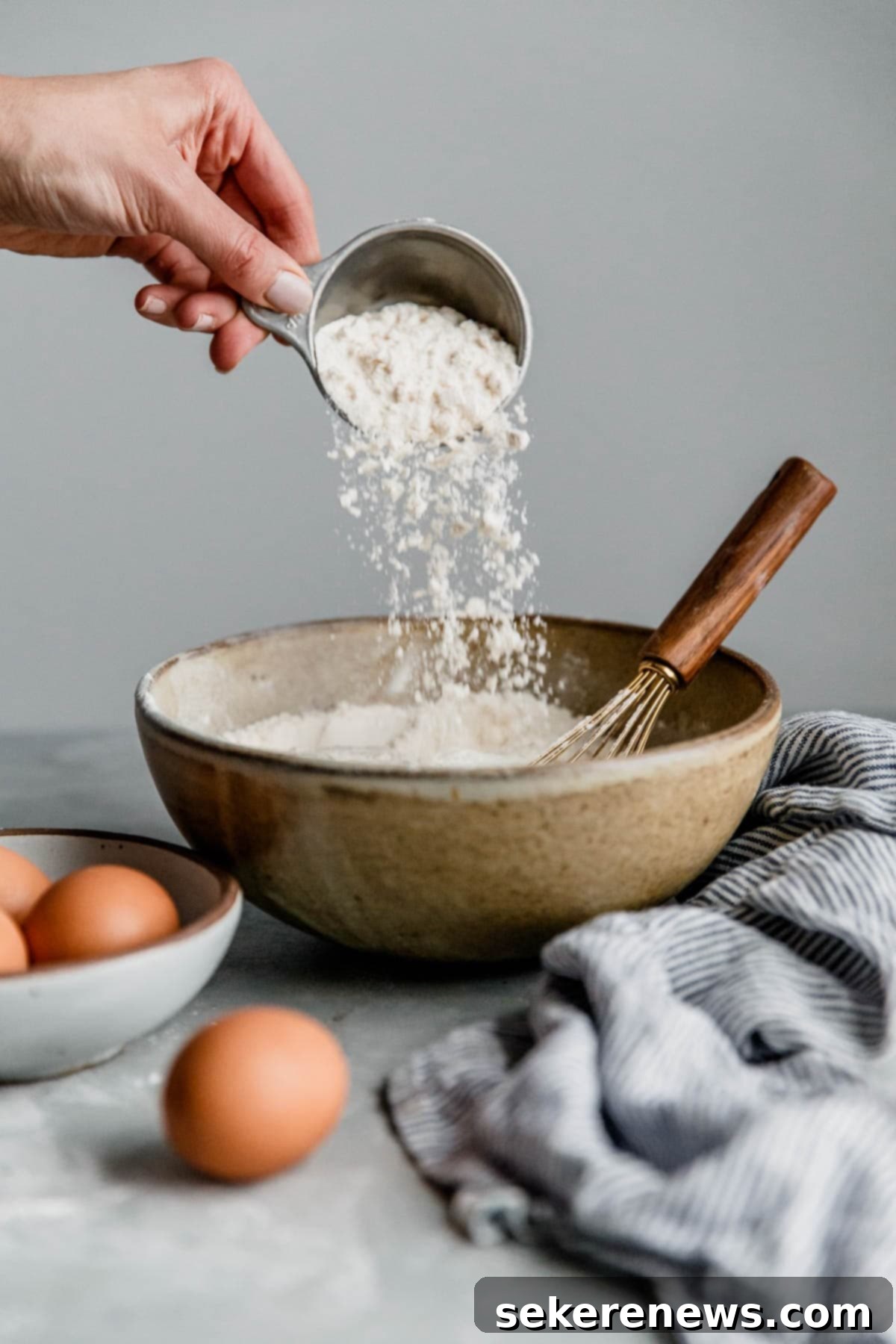Bread Flour vs. All-Purpose Flour: The Ultimate Baker’s Guide to Protein, Gluten, and Perfect Bakes
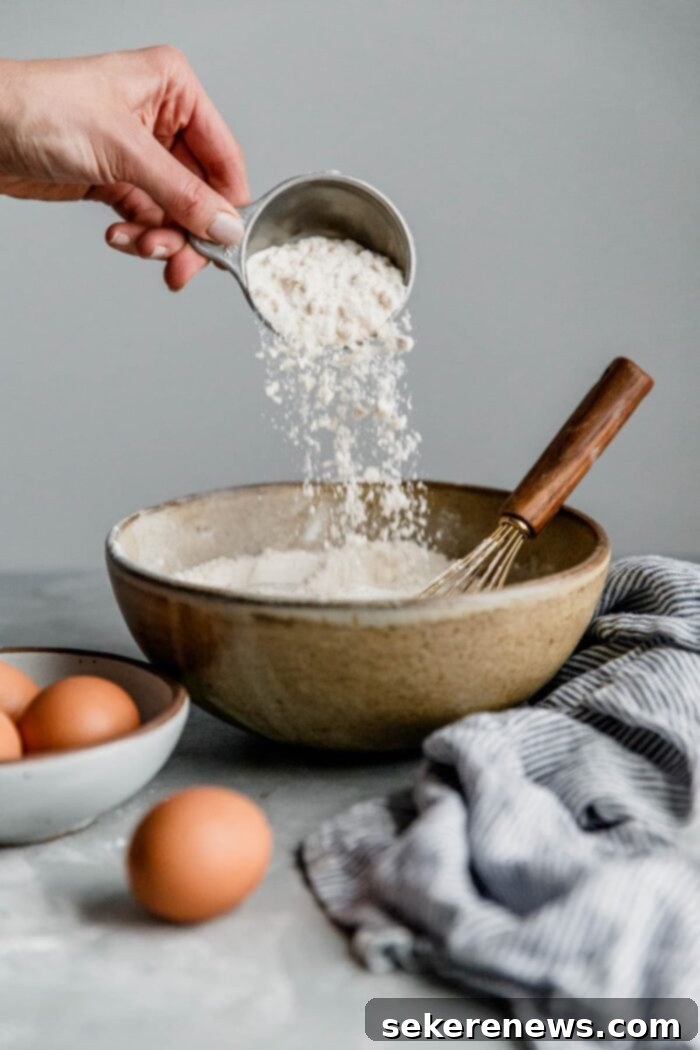
Embarking on a baking adventure often leads to a fundamental question: what’s the real difference between bread flour vs all-purpose flour? This is a deep dive into the properties of these two common kitchen staples, designed to empower you with the knowledge to make informed decisions in your baking.
As a passionate baker, especially since delving into sourdough recipes, I’m frequently asked about flour substitutions. Can you really swap bread flour for all-purpose, or vice versa? This question becomes even more pertinent during times of fluctuating availability or rising prices, making an understanding of flour characteristics invaluable for every home baker.
Before we answer the age-old substitution question (spoiler: yes – but with important caveats!), it’s crucial to grasp the fundamental difference that sets bread flour and all-purpose flour apart. This isn’t just baking trivia; this knowledge will transform you into a more intuitive, confident, and successful baker, consistently improving the outcome of your baked goods.
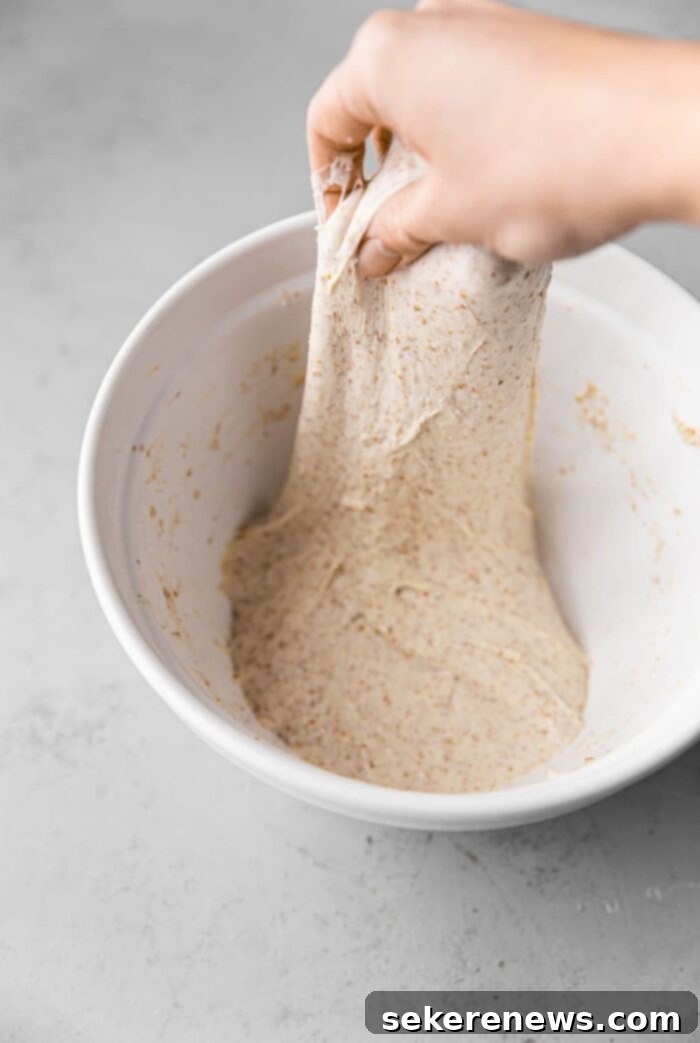
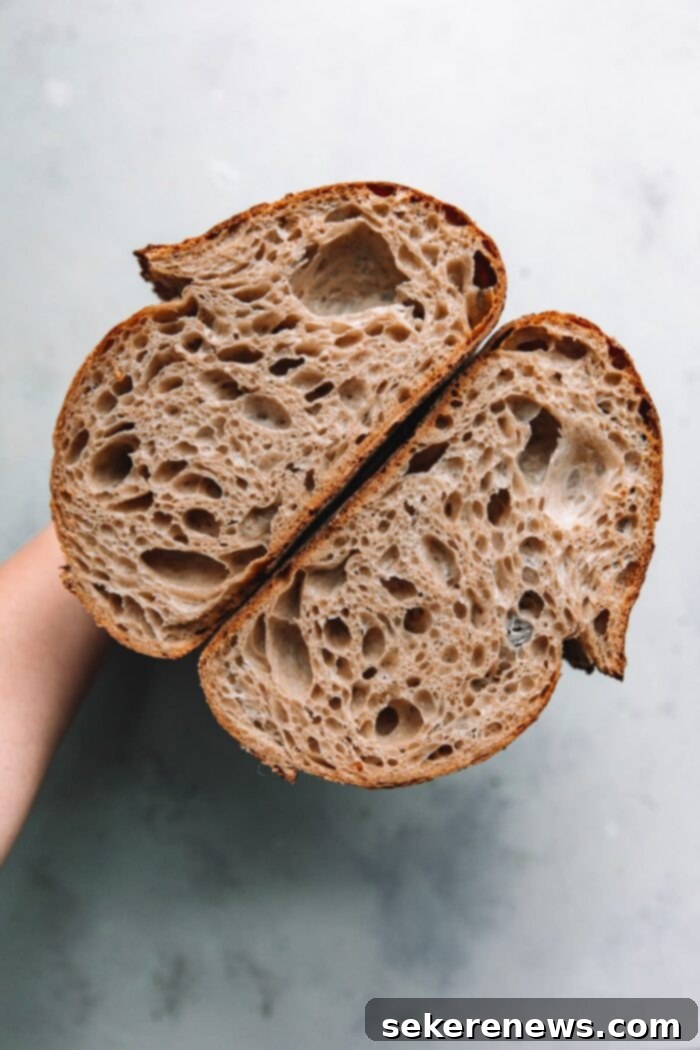
The Primary Distinction: Protein Content
Both bread flour and all-purpose flour are classified as refined flours, meaning they’ve undergone a milling process where the wheat germ and bran have been removed. This results in a fine, white flour. However, the critical characteristic that distinguishes them is their protein content.
Bread flour inherently contains more protein than all-purpose flour. But why is this the case?
The answer lies in the type of wheat used to mill each flour. Bread flour is typically produced from hard red spring wheat, which is naturally higher in protein. All-purpose flour, on the other hand, is milled from a blend of soft or hard red winter wheat, which yields a lower protein content. This difference in wheat varieties is the root cause of their distinct baking properties.
- All-Purpose Flour: Generally contains 10%-12% protein.
- Bread Flour: Typically boasts 12%-13.5% protein, sometimes even higher.
Brand Differences Matter: It’s important to note that protein content can vary significantly from one brand to another. For example, King Arthur All-Purpose Flour is known for its relatively high protein content at around 11.7%, making it a robust all-purpose option. In contrast, Gold Medal Unbleached All-Purpose Flour might come in closer to 10.5%. These variations can subtly, or sometimes significantly, impact your baking results. Furthermore, natural factors can cause slight fluctuations seasonally or even from batch to batch.
Bleached vs. Unbleached All-Purpose Flour: The processing of flour also plays a role. Bleached flour undergoes a chemical treatment that not only whitens it but can also slightly weaken its protein structure. Consequently, bleached flour generally contains less protein than its unbleached counterpart. For instance, White Lily Bleached All-Purpose Flour, known for its delicate properties, often has a protein content as low as 8-9%, making it ideal for tender cakes and biscuits.
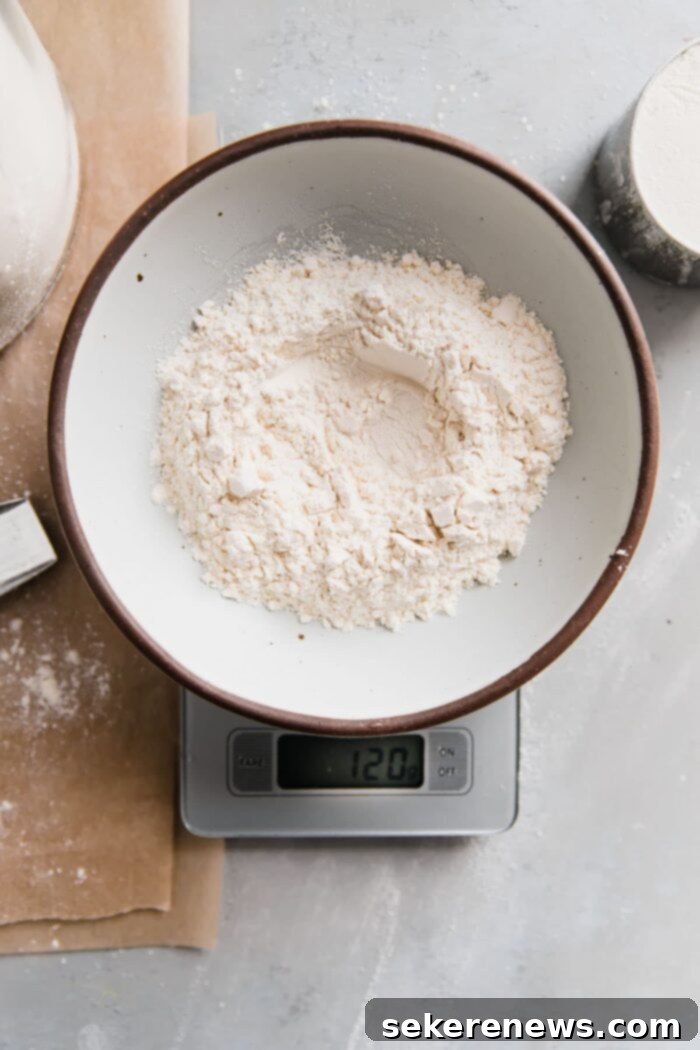
The Science of Gluten: How Wheat Protein Impacts Baked Goods
The magic happens when wheat protein, specifically gliadin and glutenin, comes into contact with water or other liquids. This interaction, combined with mechanical agitation (like kneading), initiates gluten development. Gluten forms an elastic network that gives dough its unique properties.
Flours with higher protein content, such as bread flour, facilitate increased gluten development. This translates directly into enhanced strength, superior elasticity, and robust structure within your doughs and batters. These strong, elastic gluten networks behave like tiny, interconnected slinky-like structures. They are crucial for trapping the gases produced by yeast or other leavening agents, allowing the dough to stretch, expand, and rise significantly.
Ultimately, this robust gluten network is what produces the desirable characteristics in many baked goods: crisp crusts, wonderfully chewy textures, and impressive higher rise and overall volume in breads, bagels, and pizzas. The strength of the gluten framework allows the bread to hold its shape during fermentation and baking, resulting in that coveted open, airy crumb structure.
Various baking techniques, including rigorous kneading, gentle stretch and folds, and advanced methods like lamination, are all designed to strengthen and concentrate these vital gluten networks, further enhancing the final texture and structure of your baked goods.
Note on Gluten Development: While higher protein content is generally a strong indicator of increased elasticity and strength, it’s not the only factor. For instance, whole grain flours, despite having higher protein, often yield weaker gluten networks due to the sharp bran particles interfering with gluten formation. Other ingredients in your recipe also significantly impact gluten development. Fats (like butter or oil) can tenderize the crumb by coating gluten strands, inhibiting their full formation, while salt helps strengthen the gluten network. Sugar can also tenderize, and acidity (like in sourdough) can influence gluten structure. For a more comprehensive understanding of these interactions, explore this detailed article on different types of flours and their specific uses in baking.
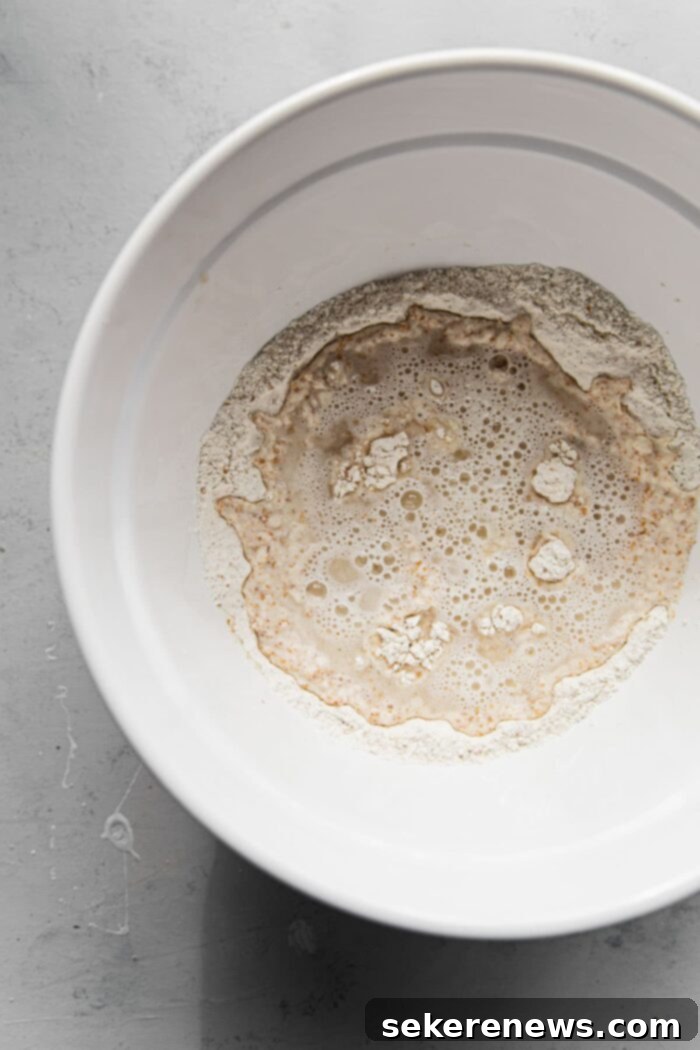
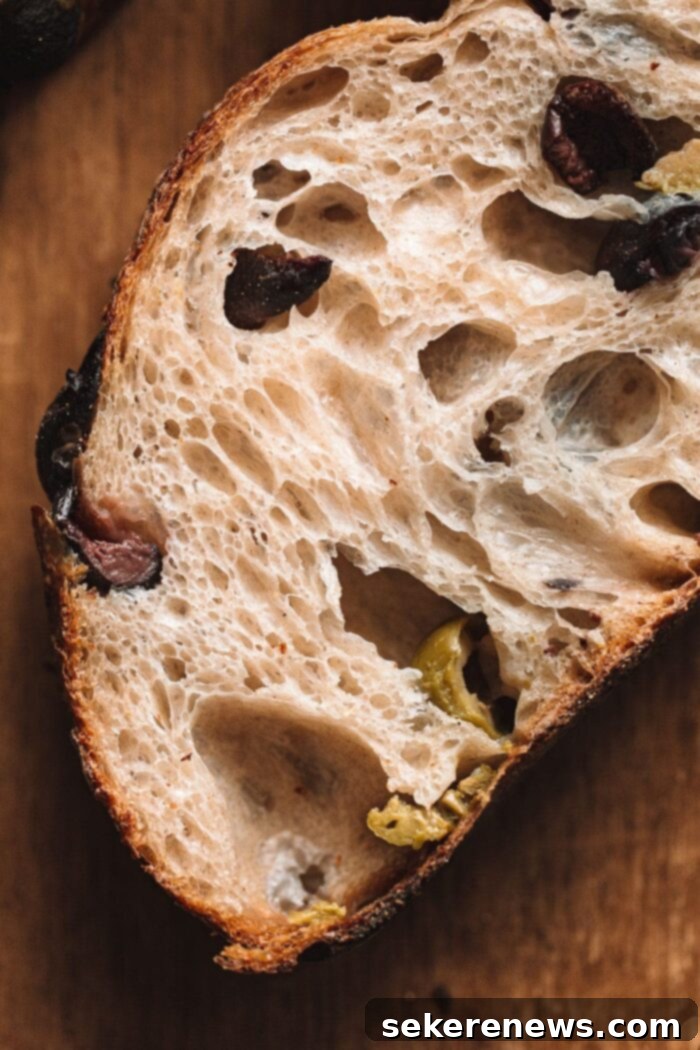
The Relationship Between Protein and Water Absorption
An often-overlooked but critical aspect of flour protein content is its direct correlation with water absorption. High protein wheat flours are capable of absorbing and retaining more water (or any liquid) compared to their lower protein counterparts. This is because the protein molecules themselves can bind with more water, forming a more hydrated and extensible dough.
Conversely, all-purpose flour, with its lower protein content, is inherently less absorbent than bread flour. It simply lacks the structural capacity to soak up as much liquid. Understanding this absorption differential is paramount when you’re adapting recipes, making flour substitutions, or trying to achieve a specific dough consistency. If you swap flours without adjusting liquid, you could end up with a dough that is either too dry and stiff (using AP where bread flour is called for) or too wet and slack (using bread flour where AP is called for).
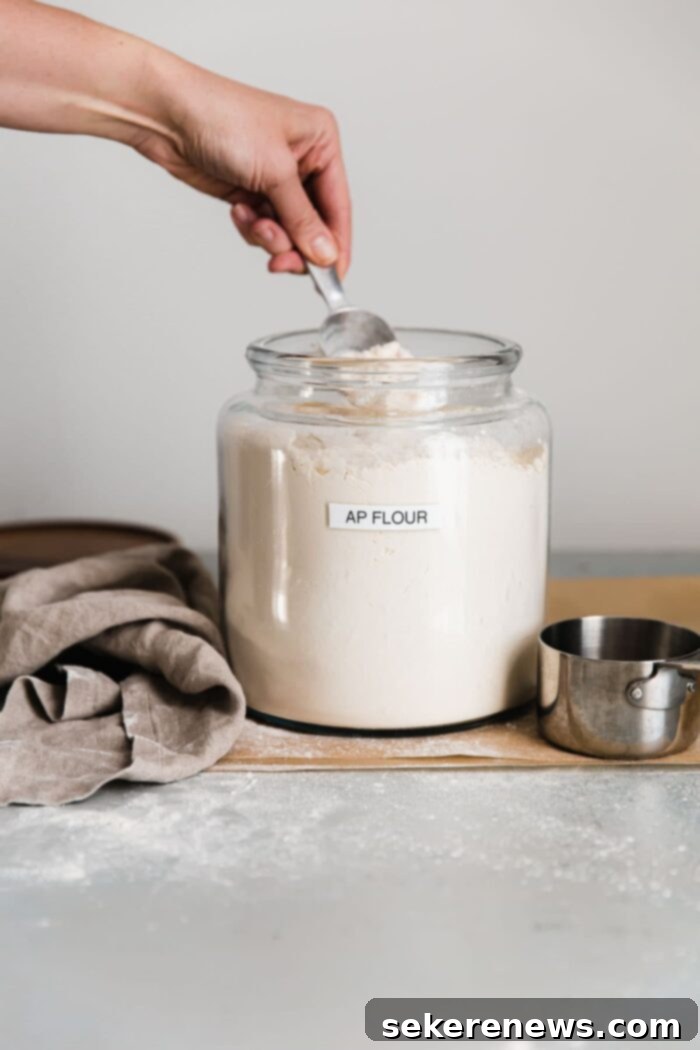
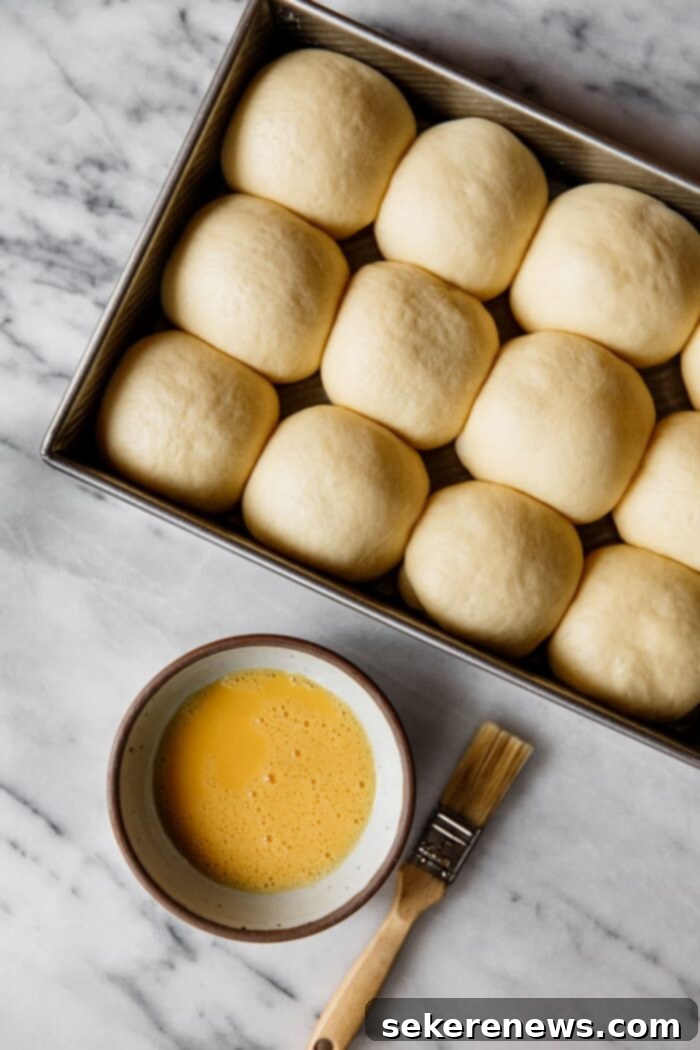
Can You Substitute Bread Flour with All-Purpose Flour? A Practical Guide
When a recipe explicitly calls for bread flour (or any other high-protein flour), adhering to the specified ingredient is always the best practice. This ensures that you will achieve the intended texture, rise, and overall outcome designed by the recipe developer.
However, practical realities often necessitate flexibility. The good news is, you can substitute bread flour with all-purpose flour, but it comes with a crucial understanding of the resulting changes. This type of substitution is generally more forgiving and better suited for baked goods where a supremely chewy texture isn’t the primary goal. Think of tender items like fluffy dinner rolls, quick breads, or certain cookies. You might notice a slightly less pronounced rise and a softer, less chewy crumb compared to the bread flour version, but the result will still be delicious and perfectly acceptable.
Conversely, for items where chewiness, strength, and a significant rise are paramount—such as artisanal sourdough loaves, dense bagels, or crispy-chewy pizza crusts—substituting bread flour with all-purpose will likely result in a noticeable difference. You might get a flatter loaf, a less airy crumb, and a less substantial chew. While edible, it won’t be quite the same as the original recipe’s intention.
Substitution Note: Since bread flour has a higher absorption rate than all-purpose flour, when you substitute bread flour with all-purpose, you should reduce the liquid content slightly. A good starting point is to decrease the water or other liquids by about 5-10%. Be prepared to adjust further based on the feel of the dough. The dough will naturally be stickier and less elastic than if you had used bread flour, and it may not hold its structure or achieve quite the same rise. Learning to read your dough’s consistency is key here.
Tip for Success: Given the significant variation in protein levels among different flour brands, for the best possible results when substituting, opt for an all-purpose flour with a higher protein content. Brands like King Arthur Unbleached All-Purpose Flour are often a safer bet as they lean towards the higher end of the AP protein spectrum, mimicking bread flour properties more closely. Always keep these brand variances in mind as they can be a game-changer for your baking!
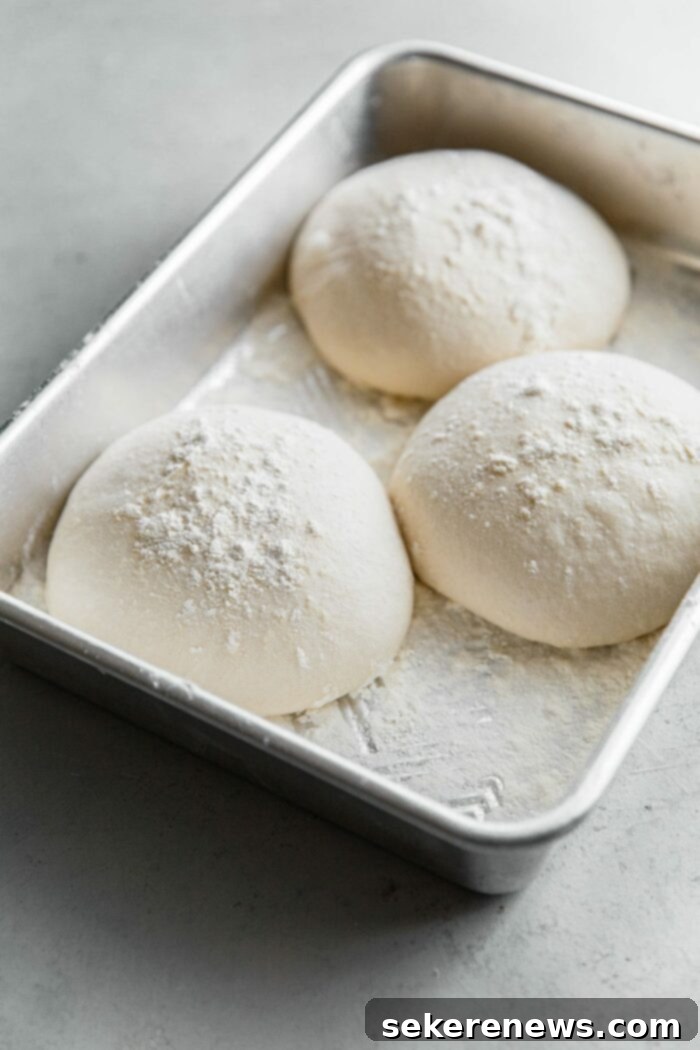
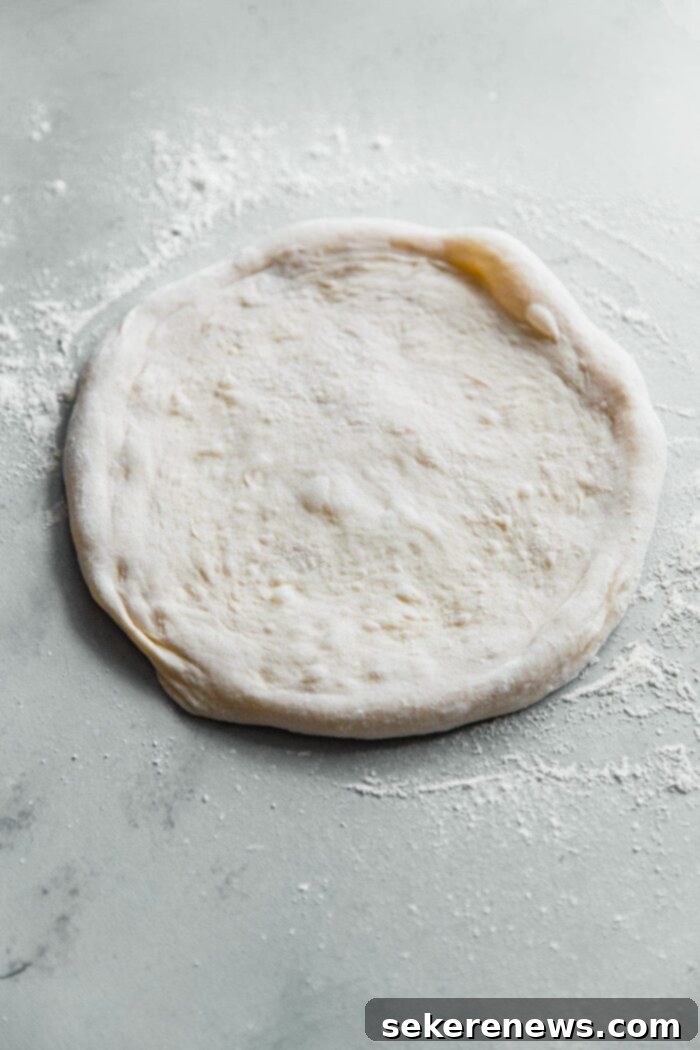
Vice Versa: Can You Substitute All-Purpose Flour with Bread Flour?
Yes, you can substitute all-purpose flour with bread flour, but this substitution is best made when your objective is to enhance the properties intrinsically linked to high-protein flours. This means you’re aiming for increased chewiness, improved structure, a higher rise, and greater dough elasticity in your final product.
Many fantastic bread and pizza dough recipes, for the sake of wider accessibility for home cooks, often call for all-purpose flour. If you enjoy your favorite no-knead French boule or a classic Margherita pizza recipe but find yourself wishing for a more substantial, chewier texture or a more robust crust, then substituting with bread flour is an excellent choice. This swap will contribute to a more developed gluten network, resulting in those desired characteristics.
The culinary world is full of examples where bakers intentionally use bread flour to achieve specific textural goals. Cookies made with bread flour are a perfect illustration of adapting recipes to suit personal taste. If you absolutely love intensely chewy (and less tender, almost bready) chocolate chip cookies, experiment by replacing a portion, or even all, of the all-purpose flour with bread flour. You’ll likely be delighted by the chewier, more substantial texture that develops. This same principle applies to other items like pretzels, rustic artisan breads, and even some enriched doughs where strength is beneficial.
When NOT to Substitute Bread Flour for All-Purpose: It is crucial to understand that bread flour should never be used in place of all-purpose flour in baked goods where a delicate, tender crumb and minimal gluten development are desired. This includes categories such as light and airy cakes, fluffy pancakes, tender waffles, soft quick breads and muffins, or fudgy brownies. In these recipes, a lower protein flour like all-purpose (or even cake flour, which is even lower in protein) is essential to prevent a tough, rubbery texture. For more in-depth information on flours designed for tenderness, reference this informative article on cake flour vs. all-purpose flour.
Substitution Note: When using bread flour as a substitute in a recipe originally calling for all-purpose flour, you will need to increase the water or liquid content slightly. Bread flour’s higher protein content means it will absorb more liquid. Failing to adjust could result in a dough that is significantly drier, stiffer, and much harder to mix and properly develop. Aim to increase the liquid by about 5-10%, or until the dough reaches the desired consistency. Expect the resulting dough to exhibit greater elasticity and overall strength, which will contribute to a more structured and chewier final product.
By understanding the fundamental differences in protein content and how that translates to gluten development and water absorption, you are now equipped to make smarter choices in your kitchen. Whether you’re making a rustic loaf of sourdough or delicate dinner rolls, choosing the right flour, or making an informed substitution, will elevate your baking to new heights.
Other Essential Baking Resources You May Find Helpful:
- Different Types of Baking Flours (and the Differences Between Them)
- Cake Flour Vs. All-Purpose Flour
- How to Measure Flour Accurately for Consistent Results
- Favorite Bread Baking Tools: Essentials for Every Baker
- Understanding Gluten: What it is and How it Works in Baking
